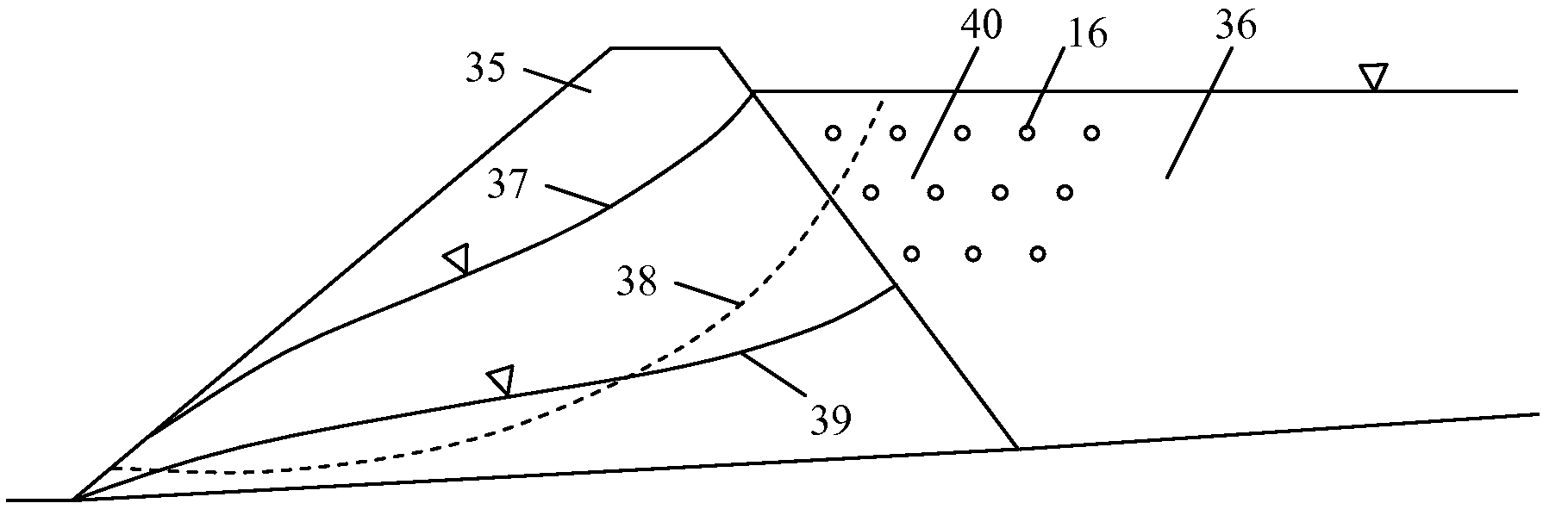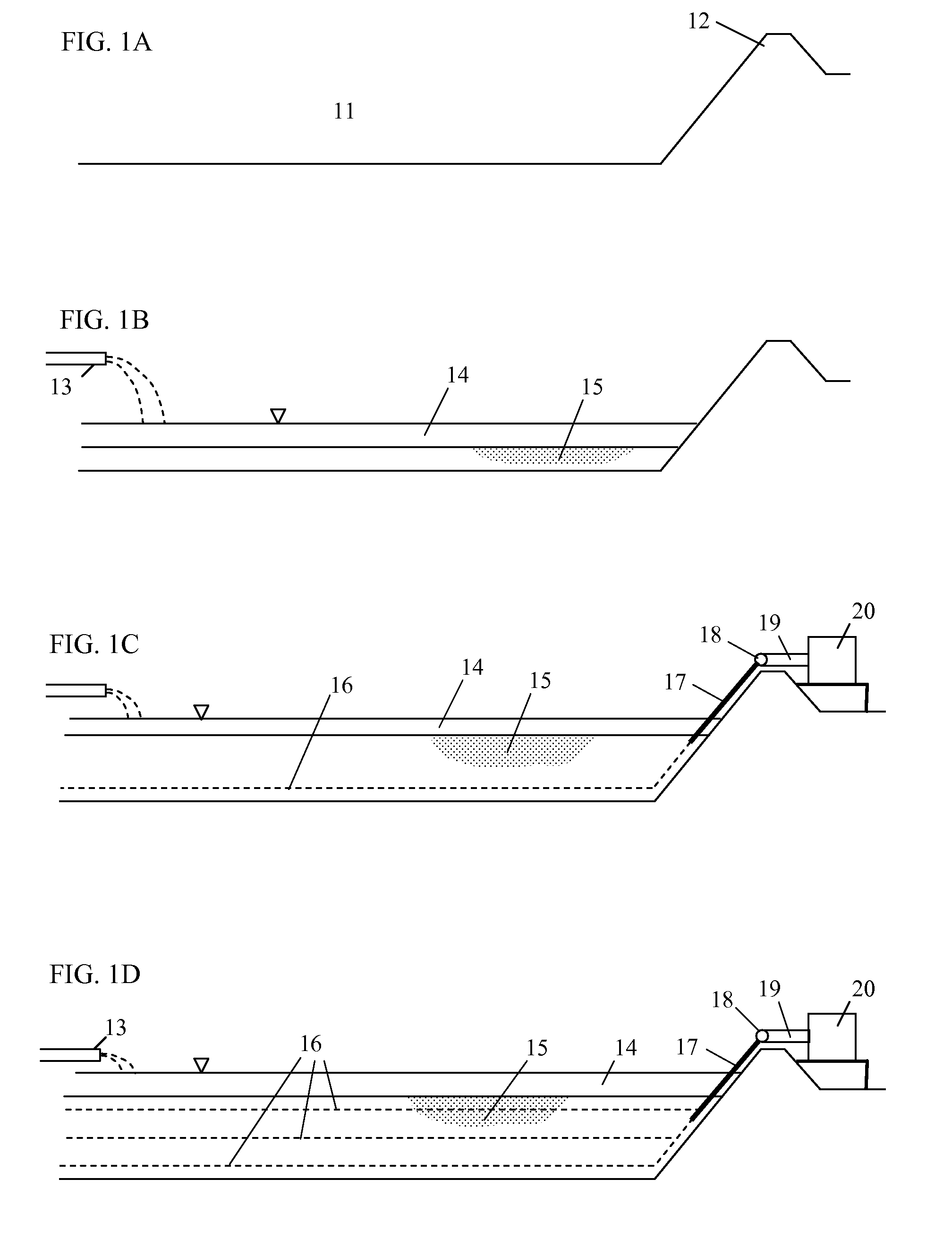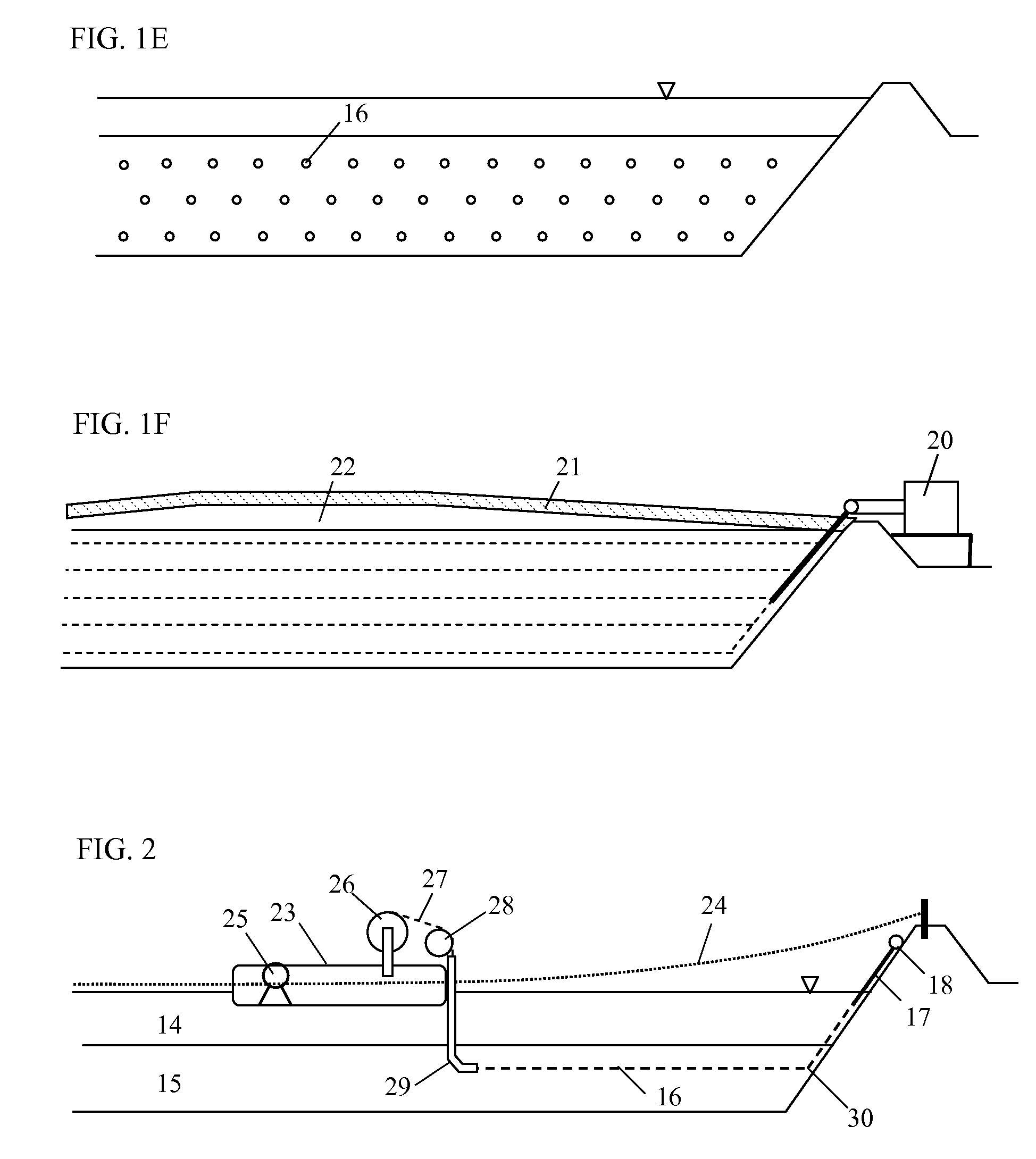Concurrent disposal and consolidation of dredged sediment using horizontal drains and vacuum loading
a technology of horizontal drains and sediment, applied in the direction of water/sludge/sewage treatment, rock-fill dams, chemical instruments and processes, etc., can solve the problems of cake requiring solidification/stabilization, cake may not fully meet all regulatory requirements, and contaminated sediments in many streams, rivers, lakes, etc., to achieve faster completion of the project, no waste of ponds, and low cost
- Summary
- Abstract
- Description
- Claims
- Application Information
AI Technical Summary
Benefits of technology
Problems solved by technology
Method used
Image
Examples
second embodiment
[0046]the present invention is to enhance containment performance by overconsolidation. Overconsolidation is a term referring to consolidation of soft clays under a load substantially exceeding the long-term, normal load expected at the site. In this embodiment, vacuum pump 20 is operated for several weeks to a few months after final cover installation. Then, the entire sediment in disposal pond 11 is consolidated under the combined load of final cover 21, fill 22, and vacuum pressure. As this combined load forces the entire sediment to consolidate under a more than normal load of final cover 21 and fill 22, the sediment is “overconsolidated.” The advantage of overconsolidation is obvious; the overconsolidated sediment in disposal pond 11 will no longer release water (in this case, leachate) or settle further, after vacuum loading is removed.
third embodiment
[0047]the present invention is in-situ treatment of sediment using the horizontal drains already in the sediment as a pathway to deliver liquid reagents. In general, the hardest problem with in-situ treatment of sediment is delivery of reagents uniformly into the target sediment volume. With horizontal drains embedded in the sediment volume at close, regular intervals, it is now very simple to deliver treatment reagents in a liquid form using an injection pump. Various biological, chemical or physical reagents may be used for this purpose. FIG. 4 discloses this embodiment wherein an injection pump 31 injects reagents through a set of horizontal drains 33 and an extraction pump 32 extracts reagents through another set of horizontal drains 34. Injecting clean water or a cleaning solution and extracting the same in this embodiment can flush the contaminants from the sediment for subsequent ex-situ treatment of liquid.
fourth embodiment
[0048]the present invention is disclosed in FIG. 5, wherein a dam 35 containing fluid earthen medium 36 is stabilized by installing horizontal drains 16 and applying vacuum consolidation using the self-sealing properties of earthen fluid medium 36. Initially, dam 35 may be unstable as a high water table 37 reduces shear resistance of soil along potential failure circle 38 and fluid earthen medium 36 in the pond exerts a high pressure on the sliding block above potential failure circle 38. Using the present invention, water level 37 in dam 35 is lowered to a lowered water table 39 and the fluid earthen medium behind dam 35 is consolidated to a stabilized earthen medium 40 having a higher shear strength. As a result, the shear resistance along potential failure circle 38 increases significantly and the dam and pond system becomes stable.
PUM
| Property | Measurement | Unit |
|---|---|---|
| thick | aaaaa | aaaaa |
| thick | aaaaa | aaaaa |
| thick | aaaaa | aaaaa |
Abstract
Description
Claims
Application Information
 Login to View More
Login to View More - R&D
- Intellectual Property
- Life Sciences
- Materials
- Tech Scout
- Unparalleled Data Quality
- Higher Quality Content
- 60% Fewer Hallucinations
Browse by: Latest US Patents, China's latest patents, Technical Efficacy Thesaurus, Application Domain, Technology Topic, Popular Technical Reports.
© 2025 PatSnap. All rights reserved.Legal|Privacy policy|Modern Slavery Act Transparency Statement|Sitemap|About US| Contact US: help@patsnap.com



